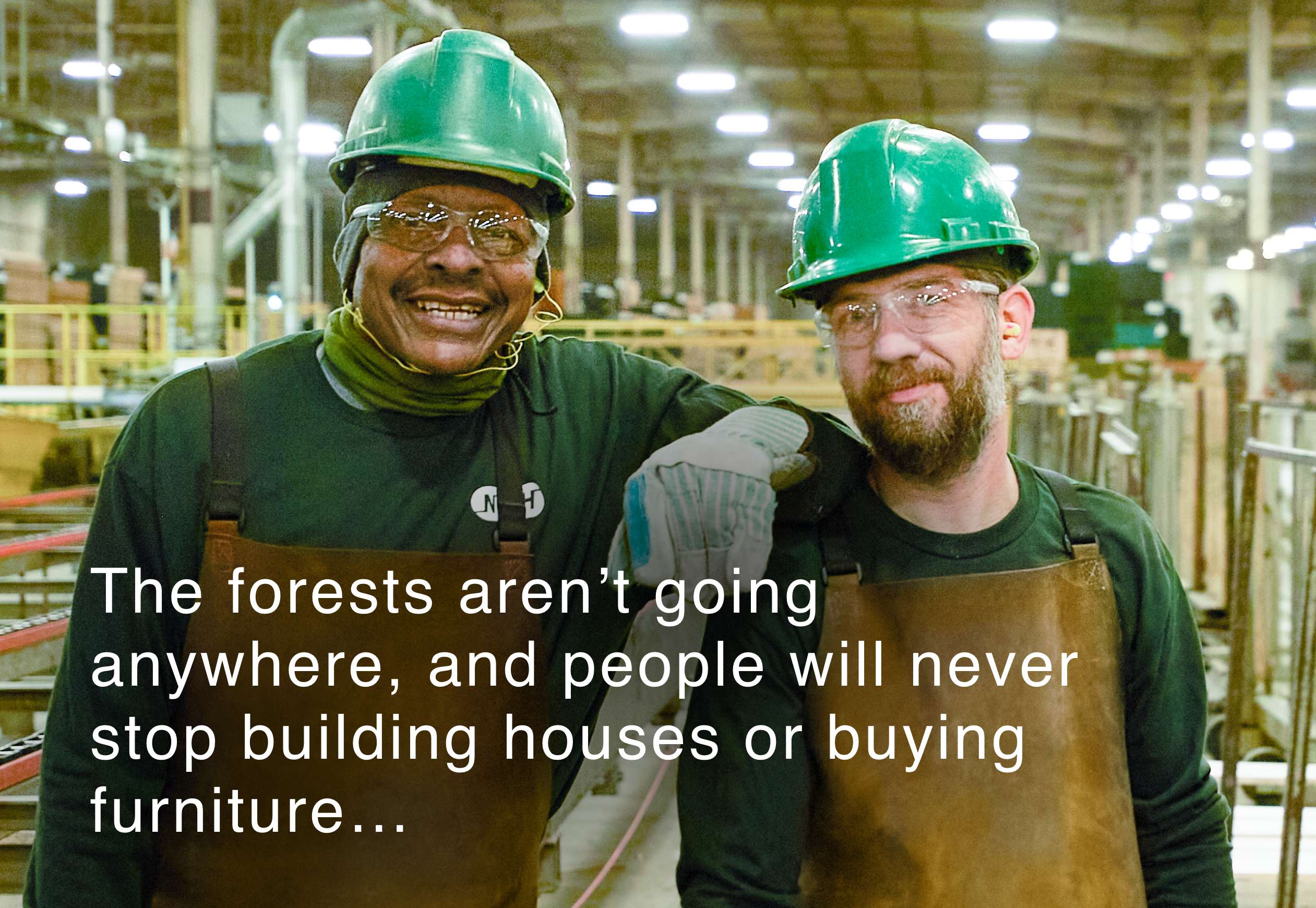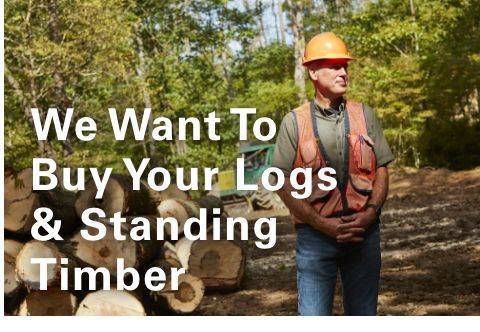Getting it Done in Dunn County
Dunn County, in heavily wooded northwestern Wisconsin, is a perfect example.
“What would the community be without the sawmill? A lot of us put our lives into it,” wonders a longtime operations manager for a Midwestern hardwood lumber company. He takes the long view. “Think of it as a garden. We’ve spent 150 years plucking all the weeds, and have it pristine.”
The Company’s “garden” is managed as a legacy crop that connects generation to generation, and nurtures its workers and communities in an area that otherwise lacks much industry or opportunity. 1

According to a 2021 Wisconsin DNR report on the forest economy in Dunn County , workers make an average of $66,000 a year, $10,000 more than the county’s average wage. Every 10 forestry jobs in Wisconsin supports 12 more, and every million dollars of business done by the industry generates an extra $210,000 in the community. Forestry is the number-one industry in Dunn County, and a $38 billion business in Wisconsin alone.3
Nationally, forest products account for about four percent of the total U.S. manufacturing GDP, producing nearly $300 billion in finished products.4 The industry supports 685,000 jobs, most of which are solidly middle class and in parts of the country where career options are scarce.
The hardwood lumber industry remains a solid bet for the future, as long as people continue building homes and buying furniture—keeping demand high gives us the incentive to care for our forests.
This security extends to the communities connected to these forests.
Helping Local Businesses Thrive
Healthy wages support healthy families, and healthy families drive healthy communities. Merchants, restaurants, hair salons, childcare centers and medical centers are the heartbeat of small towns in rural America, businesses that create even more living-wage jobs.
And the forestry operations themselves – logging operations, sawmills and furniture makers – also do a lot of business in these towns, hiring contractors and trucking companies, and supporting banks, construction companies, implement dealers, mechanics and maintenance professionals.
And, of course, both the workers and companies pay taxes. Nationwide this adds up to over $13 billion for local and state governments. These funds are critical to road building and maintenance, the upkeep of local bridges, supporting local schools and public services, and benefiting rural communities where a lackluster tax base often means crumbling infrastructure.
Beyond the traditional boundaries of economics, some hardwood product companies are voluntarily playing a larger role in their communities. Employees of NWH organize food and clothing drives, provide educational programs for children, donate blood, clean up around the community and engage in other charitable activities.
These “Hardwood Helpers,” as the program is known, have contributed over 5,000 volunteer hours since 2020, giving back to communities many of them call home.
Across the communities NWH serves, Hardwood Helpers have repaired daycares, volunteered for land-and-water cooperatives, repaired bike trails, built a puppet theater for a summer camp, supported the Special Olympics, landscaped fire stations and town squares, planted trees and helped clean up state fairgrounds and after devastating tornadoes.

Tourism – Another Economic Engine in Rural America
Forest products companies thrive in areas where nature tourism is also a major contributor to local economies. In fact, the health of tourism is often directly related to the health of wood products companies that have a vested interest in caring for their resources by protecting spaces and preserving biodiversity.
Many forests managed for timber products are also popular destinations for camping, hiking, hunting, fishing, canoeing, biking, bird watching because they are accessible, healthy and vibrant with wild flora and fauna.
Forestry management practices that prioritize sustainability and ecosystem health, such as those encouraged by the PEFC and FSC third party certifications, help balance the production of forest products with recreational opportunities. In particular, selective harvesting techniques maintain forest health and biodiversity, and create a perfect environment for both nature and people to thrive.
The managed forests in Dunn County actually have more trees on the same acreage than they did 160 years ago, even though the land has been harvested several times. This has been accomplished by harvesting trees that are sick and dying and harvesting those that have naturally fallen, leaving high-quality trees to grow and reproduce. It is regarded by some as the nation’s first sustainable forest.

Happiest workers in the country
Logging and forestry have the highest levels of self-reported happiness — and lowest levels of self-reported stress — of any major industry category, according to the Washington Post’s analysis of thousands of time journals from the Bureau of Labor Statistics’ American Time Use Survey.
Much of this can be attributed to the proven benefits of spending time outdoors, especially in the woods. But foresters’ happiness comes from more than just the great outdoors. Forestry forces you to work on a slower time scale and pushes you to have a generational outlook.
“There’s a point where you are now planting trees that you are not going to see harvested,” says Leslie Boby, who runs Southern Regional Extension Forestry in Athens GA. “It speaks to something larger than yourself. … Your work is living on, and someone else will benefit from your efforts in a tangible way.”

Healthy Futures
Forests are the only naturally regenerating resource in the realm of building materials. If treated with respect – properly cared for and selectively harvested – the same plot of land will nurture generations of families and communities in some of the most beautiful places in the country.
The North American hardwoods industry is an essential part of the social fabric in these places, supporting traditional lifestyles, good wages, healthy communities, and perhaps most importantly by providing economic incentives to keep the land much as our ancestors found it.
- https://www.nytimes.com/2023/04/22/climate/menominee-forest-sustainable-earth-day.html?searchResultPosition=1
- https://dnr.wisconsin.gov/sites/default/files/topic/ForestBusinesses/statewideEconomicReport2021.pdf
- https://dnr.wisconsin.gov/topic/forestbusinesses/factsheets
- https://www.fs.usda.gov/research/forestproducts
Share This Post!









